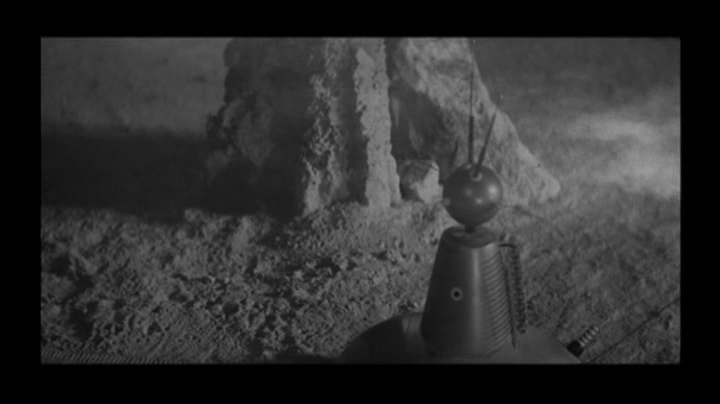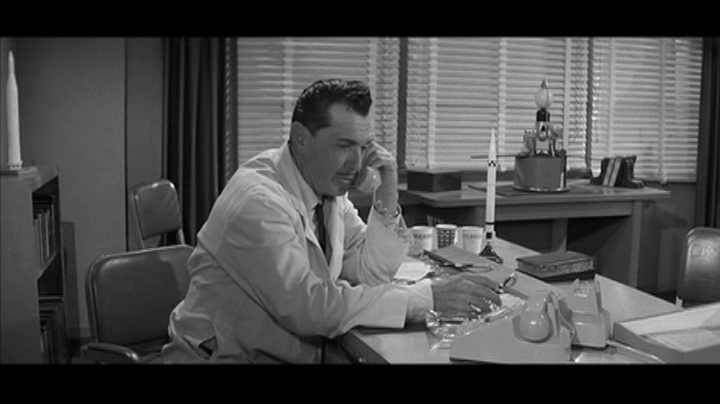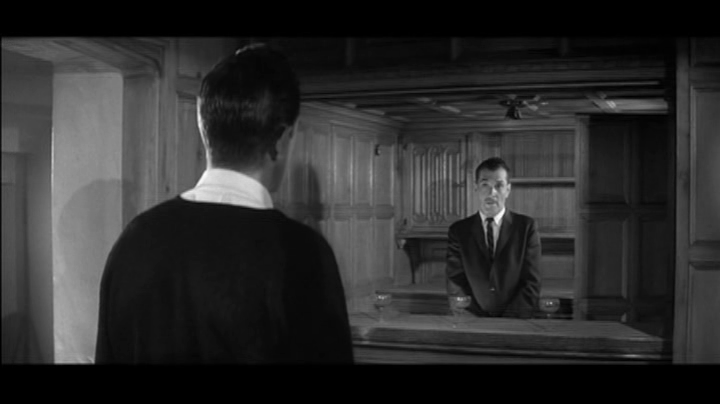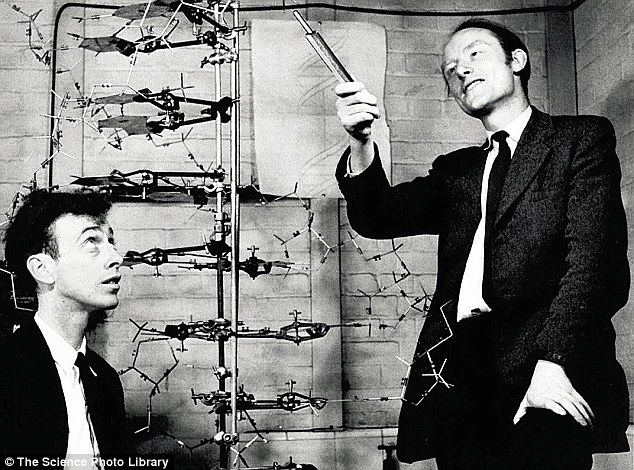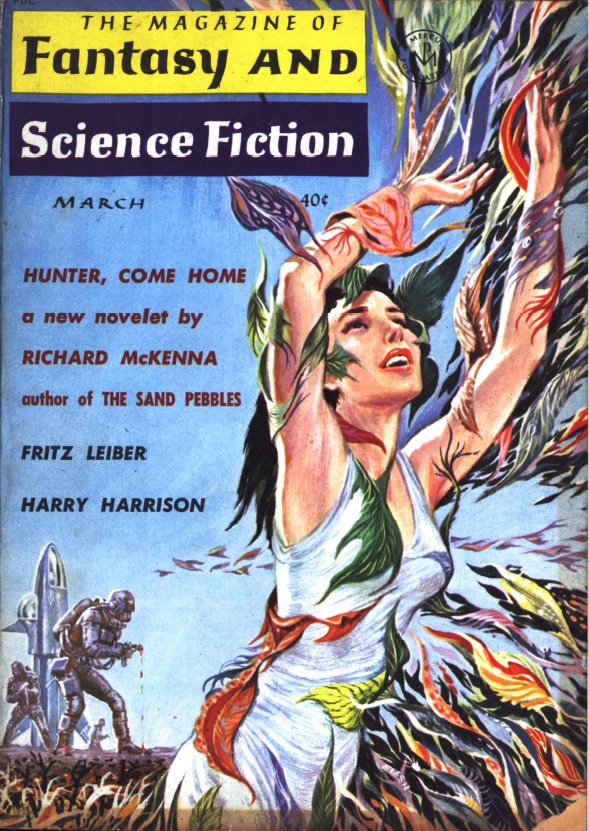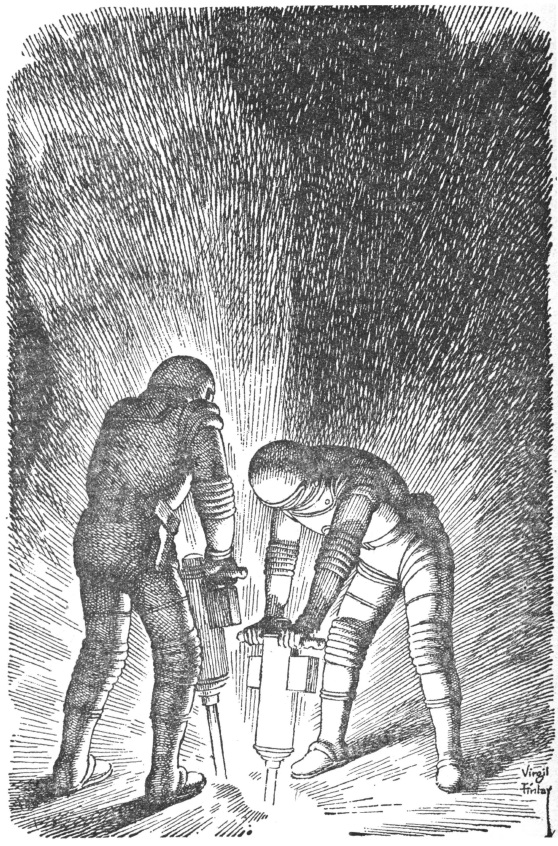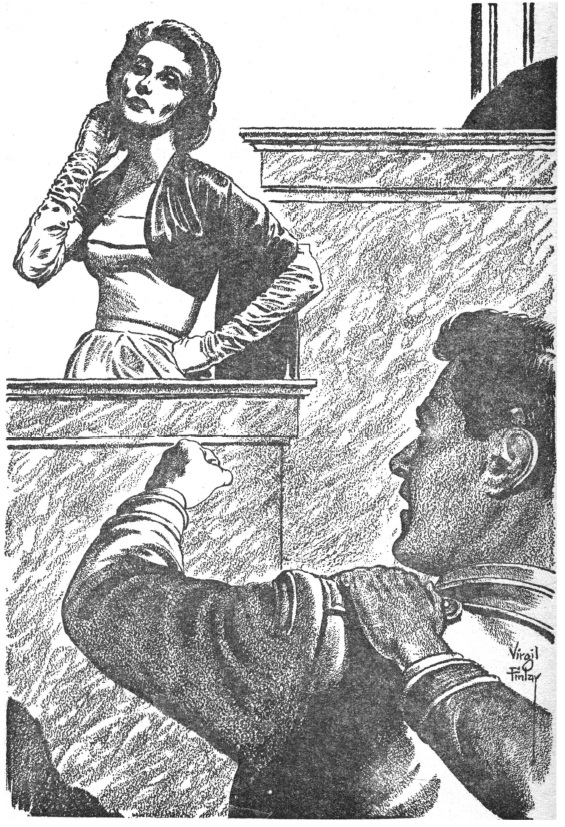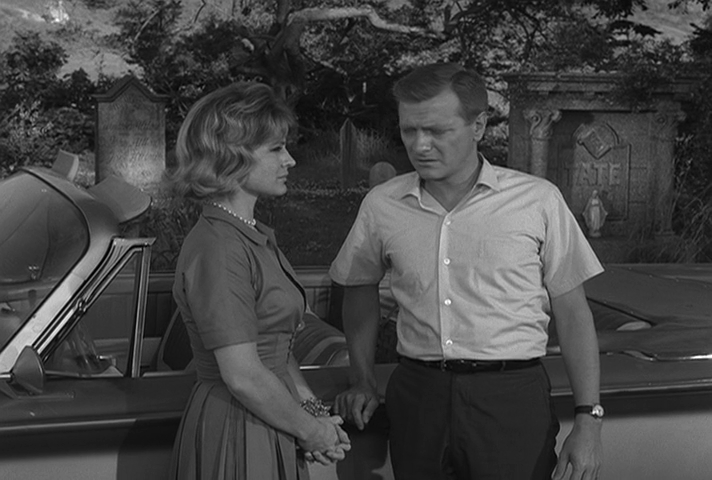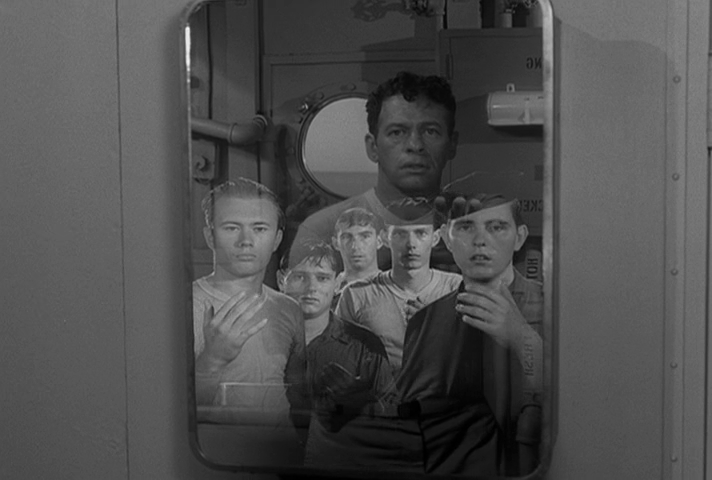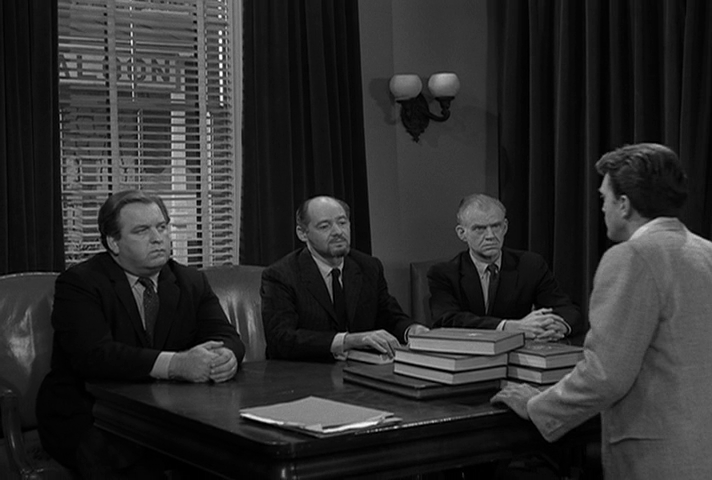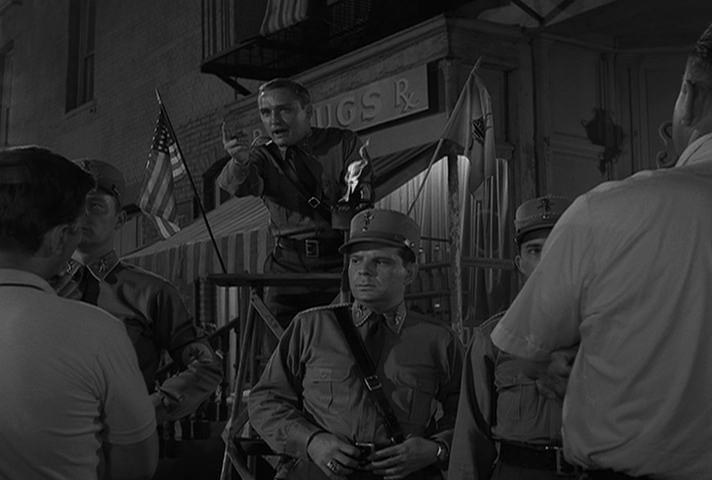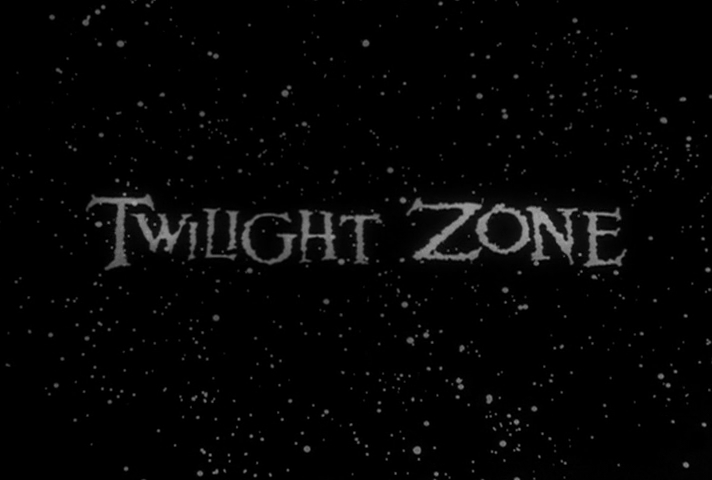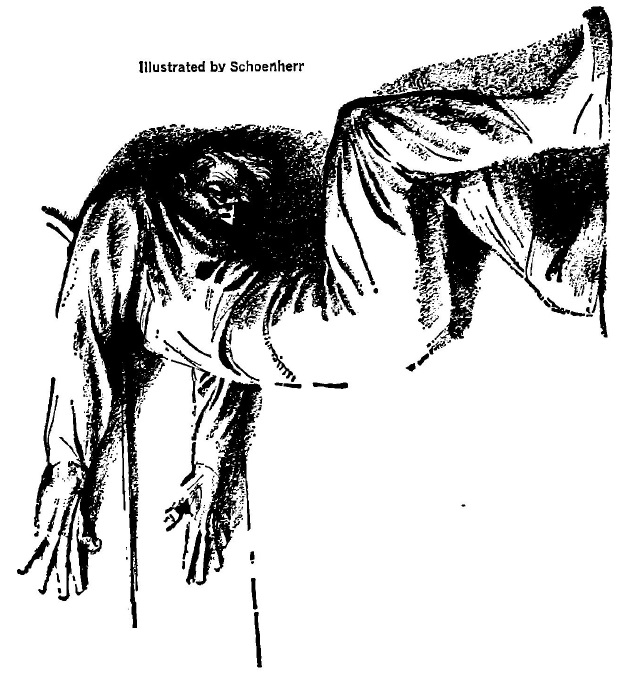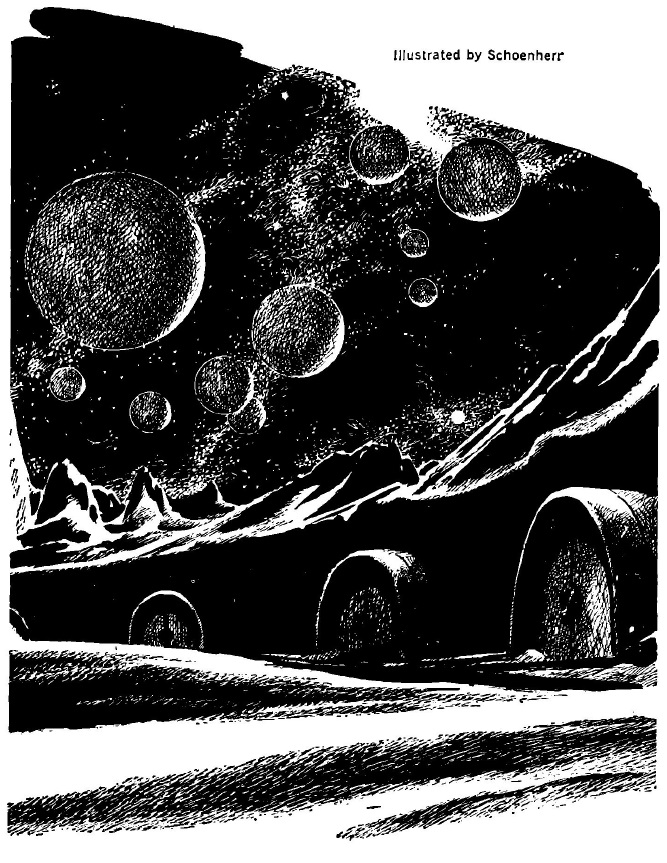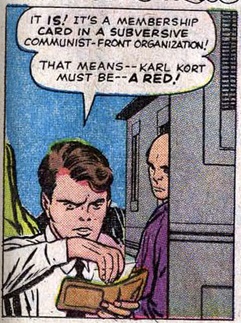
by Gideon Marcus
In prior articles, the latest news has headlined and set the stage for the SFnal reviews that followed. This week, however, the news is all internal, filled with tidbits like
"YOUNG TRAVELER LEADS ACADEMIC LEAGUE TO DISTRICT CHAMPIONSHIPS!"
and
"FIVE YEARS OF R&D CULMINATES IN PRODUCT LAUNCH FOR TRAVELER-HELMED COMPANY!"
And yet, amongst the turmoil created by Mundac the Destroyer, we manage to continue the Journey — our most prized endeavor. It helps that we now have a tremendous constellation of volunteer writers, allowing us to return to a every-other-day schedule for the first time in four years. Still, I must do my part.
And so, amidst preparations for the Young Traveler's birthday party, I carved out time to read the April Fantasy and Science Fiction. It is the inverse of last month's, which was forgettable or worse — until the last story. This month's is surprisingly good… except for the last few stories. A fair exchange, I think…

Fast Trip, by James White
Fritz Leiber recently wrote about how computers will soon be advanced enough to beat the best humans at chess in The 64-Square Madhouse. Anne McCaffrey has written a tale of human brains cybernetically fused computers to control spaceships (The Ship Who Sang). Now, returns my favorite SF-writing Ulsterian with his own spin on things. In Fast Trip, we see what happens in a world where pilots are exclusively trained on their own spaceship, for whom swapping craft is as uncomfortable as swapping right-handed gloves with a fellow half your size… and with two left hands. A good technical thriller. Four stars.
Still Shall the Lovers, by Doris Pitkin Buck
A poem on how real stars shall always pale in brilliance to those in new lovers' eyes. Three stars.
Place of Refuge, by Robert J. Tilley
A quick quality dip as Bristolian Tilley writes of the real world as if it be the nightmare, and vice versa. Uninspired. Two stars.
The Short and Happy Death of George Frumkin, by Gertrude Friedberg
A playwright, herself, Friedberg turns her hand to a Moderan-esque tale in which a nonagenarian playwright with an electric heart enjoys a brief flash of youthful energy when he's taken off batteries and plugged into the house line. It's cute. Three stars.
The Rigid Vacuum, by Isaac Asimov
There are few compound words I like better than "Luminiferous Ether," and fewer people I'd ask to explain this light-conveying substance than The Good Doctor Asimov. Four stars for the first half of what looks to be a Two Parter.
Tell Me, Doctor – Please, by Kit Reed
Ms. Reed has recently moved and left no forwarding address, sadly terminating our burgeoning correspondence. As a result, I have no authorial insight for this tale. Nevertheless, Doctor is a strange and moving piece on dependence and torture as operatives of an evil state attempt to extract the secret of time travel from a bedridden exile from the future. Difficult to read, and the ending is a strange Matryoshka that I'm still not sure I understood. But like so much of Reed's stuff, it grips. Four stars.
Kindergarten, by Fritz Leiber
A straightforward piece on learning the basic X-Y-Zs in a most unusual (and yet, the most commonplace) of settings. Four stars.
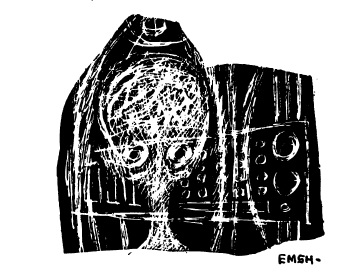
The Voyage of the "Deborah Pratt", by Miriam Allen deFord
F&SF, more than any other SFF digest, is a haven for ghost stories. This one, involving a 19th Century brig on the Gold Coast run, makes no great advances in plot. Ah, but the telling, and the subject matter (far more horrific than the fantastic elements), are superb. Five stars, and sure to be anthologized many times.
The Old Man of the Mountains, by Terry Carr
Over time, certain names in our genre incite a Pavlovian response in me. For instance, Sheckley provokes a grin. Garrett incites nausea. Carr, a newish writer and long-time Big Name Fan, definitely brings about positive reactions, having now impressed me several times in rapid succession. This pastoral piece, set in the mountains of Oregon, features the reunion of a country-turned-city boy, and the ornery cuss who knew his uncle many years before. Like the deFord, the quality is in the telling. Four stars.
My Son, the Physicist! by Isaac Asimov
Here's an inconsequential short-short from a fellow who has mostly abandoned science fiction. I understand Asimov got a princely per-word sum for this piece, and it was used to adorn an advertisement for Hoffman Electronics in one of last year's Scientific Americans. Three stars.
The World Must Never Know, by G. C. Edmondson
I really want to like Edmondson, a fellow San Diegan and one of the few non-Whites who has made it into the ranks of the SFF genre (he's Mexican). But this latest in the series of stories set South of the Border, guest-starring a Mestizo who met an extraterrestrial policeman (to the former's profit, and the latter's dismay), is just too affected. Two stars.
The Histronaut, by Paul Seabury
I didn't think I'd ever meet a time travel/alternate history story I didn't like, but Seabury managed to produce one. One page of story preceded by many pages of dithering and nonsense. And that single page isn't worth the wait. One star.
Not Counting Bridges, by Robert L. Fish
Finally, a piece on the growing footprint of space devoted to the transit, maintenance, and storage of motor vehicles. Two stars, careening toward one had it been longer than two pages.

That's a pretty sour note to leave a magazine that still scored a decent 3.2 stars on the Galacto-Meter. If you stop before the Edmonson, I think you'll find your time thoroughly rewarded.
Speaking of which, I'm now off to jump on the giant trampoline we rented for the birthday party. If I spot any X-15s on the way down, I'll be sure to snap a photo…




